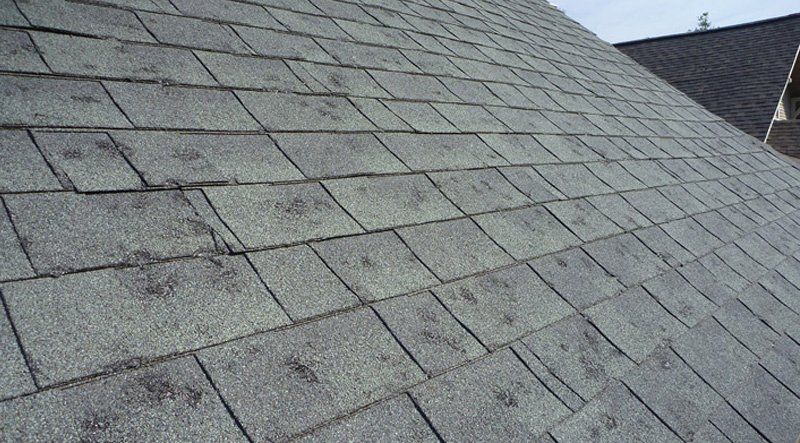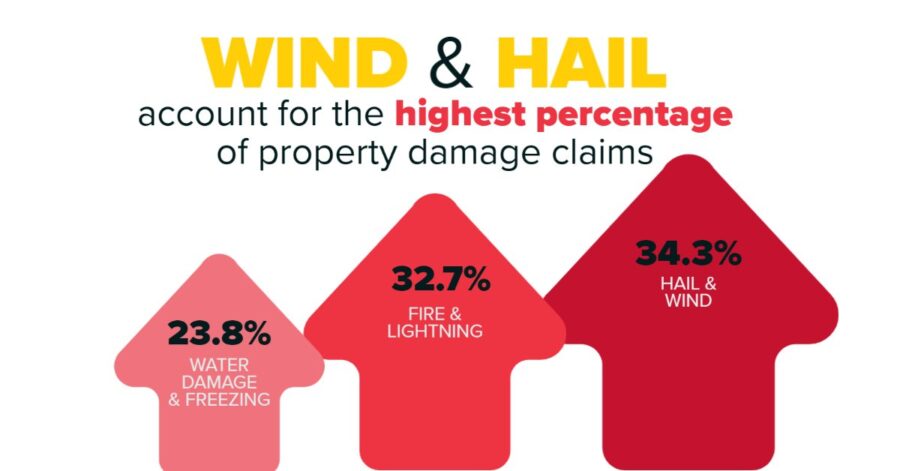
How Hail Damages a Roof
Of all the areas of your home, your roof is most at risk for hail damage. Asphalt shingles impacted by hail can loosen and shed the protective granules that coat their surface. Wood shake, clay tile, and other types of natural roofing can split or crack in the wake of large hail impacts. Some hail damage isn’t always obvious, and seemingly insignificant impacts can still cause harm to underlying roof structures. When shingles become bruised by hail, they can form micro fractures at the point of impact, allowing water to seep through. The sun can weaken exposed bruised spots and make them brittle. Extreme temperature swings are also troublesome, as they can cause the rapid expanding and contracting of roofing materials, which can weaken shingles and exacerbate hail damage.

To combat the problems caused from hail, contractors often turn to impact resistant (IR) roofing. The UL 2218 classification, developed in 1996 by the Institute of Business and Home Safety and Underwriters Laboratories, is the national standard for roof impact resistance. Roofing materials receive an IR rating of 1-4 (four being the strongest) based on a laboratory test in which a steel ball is dropped onto the materials from a certain distance.
When it comes to asphalt shingles, there are many types of IR products available, with polymer-modified (a.k.a. rubberized) shingles being a great option. Due to the flexibility of the polymers that are blended with the asphalt during manufacturing, these shingles stand up better to the force of impact than non-modified shingles. They are also more resistant to damage from extreme temperature changes. If you live in an area susceptible to hail storms, IR shingles are worth investing in! You may even get a homeowners insurance discount for having these highly durable shingles installed on your property.
An ideal way to protect your home from hail is to invest in impact resistant roofing products like rubberized shingles and metal roofing. Make sure to inspect your roof after every storm. If you are not sure how much damage there is, check your gutters for collected asphalt granules. If you see a large accumulation of granules after hail, you should have your roof inspected by a professional. Also, check to see if objects like roof vents have sustained heavy damage.
THE SCIENCE BEHIND HAILSTORMS
Hailstorms are typically a byproduct of severe thunderstorms. Hailstones begin to form when raindrops are carried upward by a storm into extremely cold areas of the atmosphere and freeze, and continue to grow when they collide with water droplets that freeze onto the hailstone’s surface.
Hail falls when the updraft can no longer support the weight of the hailstone. Most hail falls at speeds between 25-40 miles per hour, but very large hailstones (diameters exceeding four inches) can fall at speeds of more than 100 mph. Hail swaths (paths of hail) can range in length from a few to 100 acres. Whether large or small in size, hail can cause serious damage. According to the U.S. Department of Commerce, hailstorms caused $723 million in property damage and $87 million in crop damage in 2018 alone.
WHY EATON ROOFING & EXTERIORS?
Since 1993, we’ve been the hometown roofing company you trust. We’ve earned numerous awards that speak to our craftsmanship and professionalism. We’ve teamed up with Sunlight Financial to find you competitive loan options that save you money and get your project done right. We have worked hard to build trusted relationships with insurance companies to make the full service repair process seamless. Often homeowners are surprised by the ease of the claims process.



 Wichita HQ
Wichita HQ